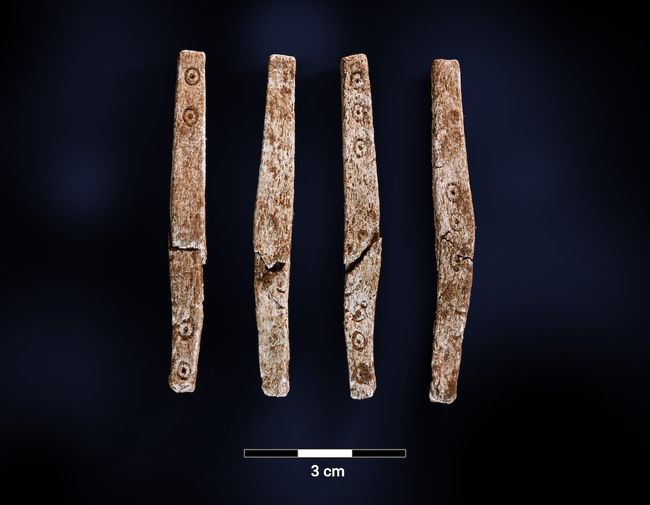Ancient Roman dice unearthed in cremation pit in Norway
By Yasemin Saplakoglu - Staff Writer 3 days ago
Ancient board games were a "symbol of position in society"

Ancient dice (four faces shown here) was found in an early Iron Age grave cairn in Western Norway.
(Image: © University Museum at Bergen)
On a cliff overlooking a narrow strait in western Norway, archaeologists have discovered rare game pieces, including odd-looking, elongated dice inside a burial mound dating to the Roman Iron Age, between A.D. 1 and A.D. 400.
The game pieces, with bulls-eye-like markings that stood for various numbers and 18 circular pieces, may have been made from rare material such as antlers.
The pieces were likely used in a board game inspired by the Roman game Ludus latrunculorum, precursor to the famous Viking board game Hnefatafl, which was played hundreds of years later, according to a statement from the University Museum of Bergen. These board games were a "symbol of position in society," and "showed the basic capabilities of thinking intelligently and strategically," said Morten Ramstad, a researcher with the University Museum of Bergen, who led the excavations.
Board games in ancient Scandinavia were played only by the elite, and so these gaming pieces — and the burial in which they were found — likely belonged to a powerful person, Ramstad said. But the discovery of this grave cairn (a pile of stones serving as a burial mound) wasn't much of a surprise.
More:
https://www.livescience.com/ancient-game-pieces.html
